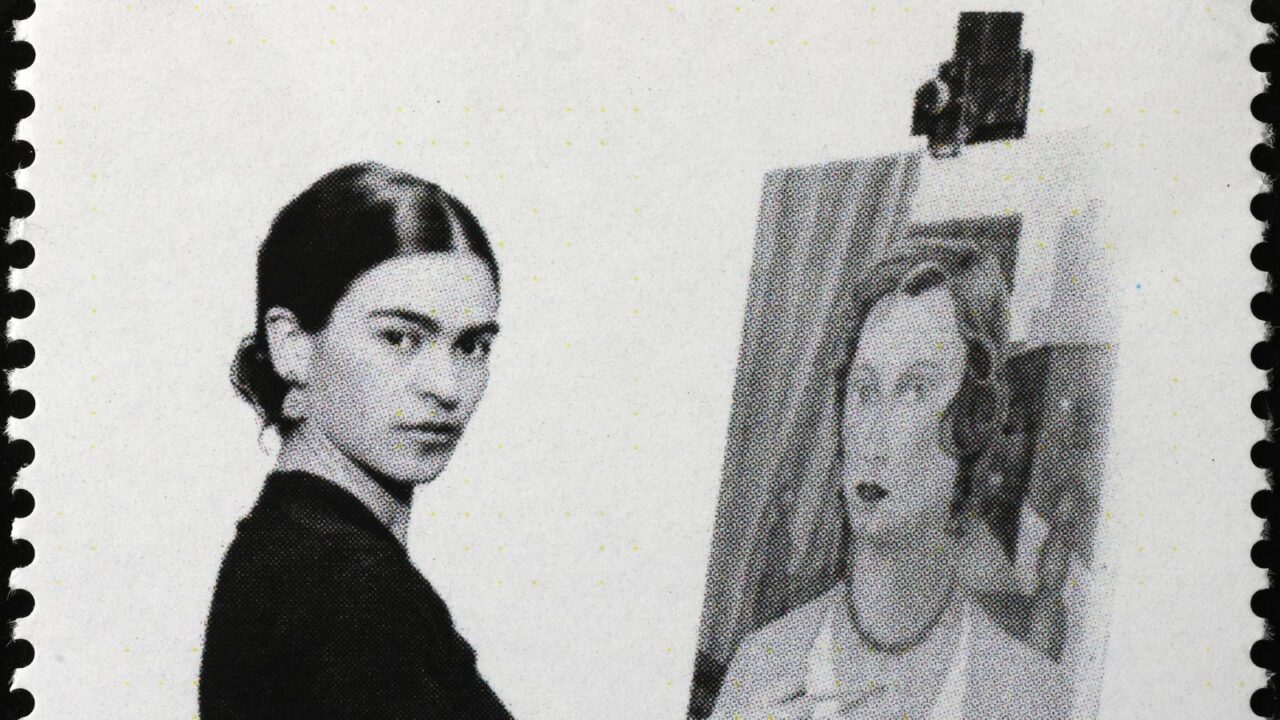
Casa Azul Museum
Casa Azul, the place where Frida Kahlo lived, isn’t just for history fans. It feels like someone still lives there. The walls are bright blue. The kitchen has handmade tiles. Rooms feel cozy, not curated. You’ll notice small details everywhere: paintbrushes, mirrors, and plants in unexpected spots.
It’s not perfect, and that’s what makes it feel real. It doesn’t follow a design rulebook. It shows how a space can grow around a person’s life, not the other way around. That’s why it still feels warm and full of energy, even if you’re only there for an hour.
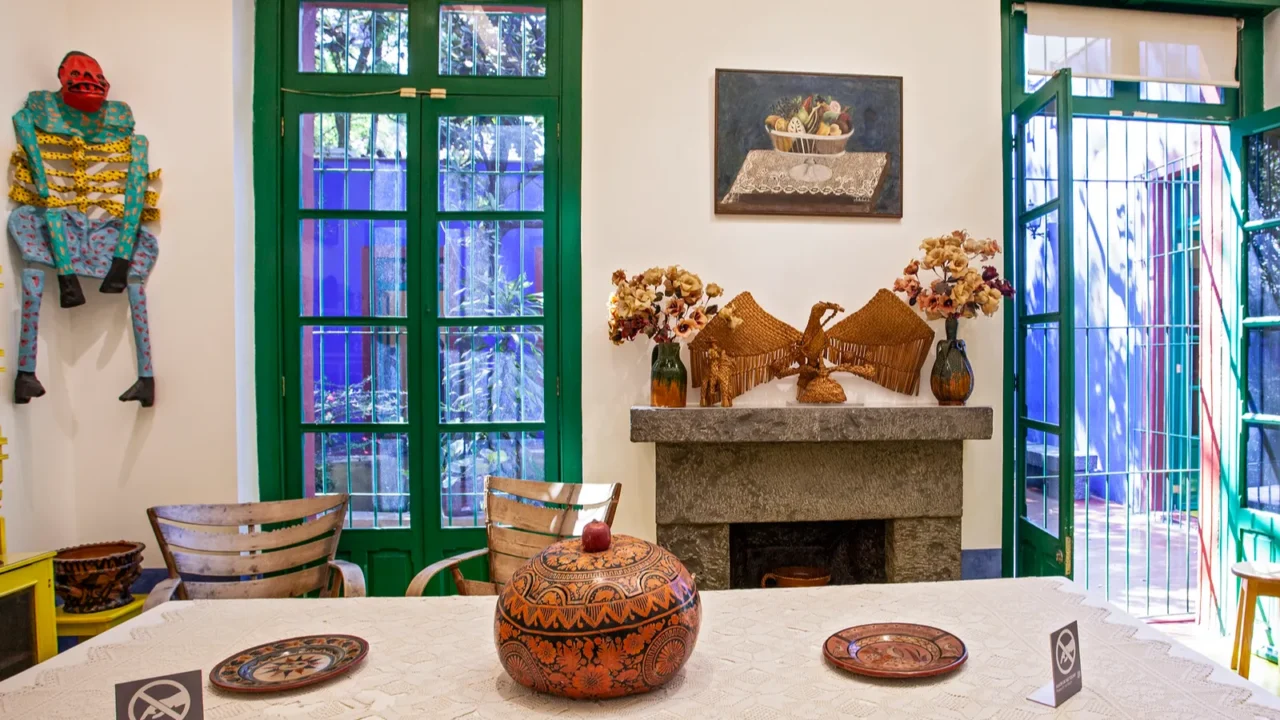
Handmade Details Are Everywhere
It’s easy to miss the small things at Casa Azul. Hand-painted tiles line the walls. Folk art pieces sit on tables like everyday objects. The clay pots and dishes don’t come from fancy stores; they look like they’ve been used for decades. That’s part of the charm.
There’s a sense that someone made each piece with care. It doesn’t feel overly decorated. It feels like a home that grew slowly over time. You could never buy all this in one weekend. And you wouldn’t want to.
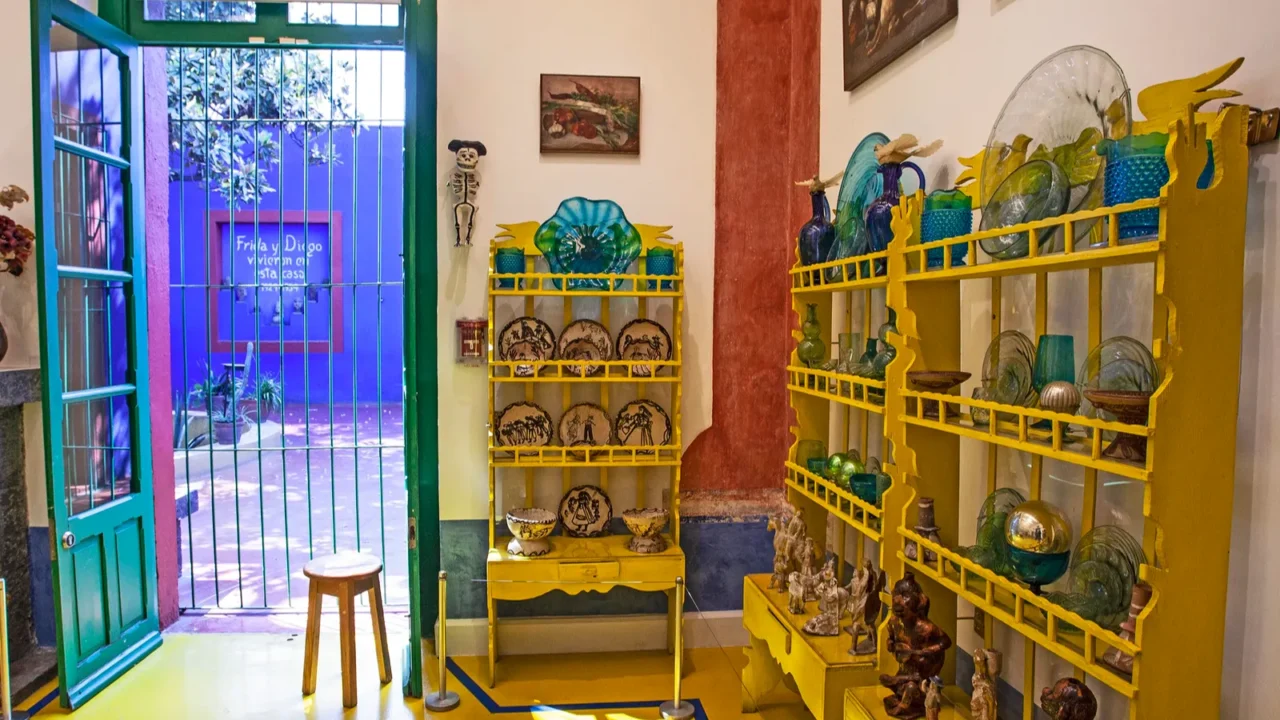
Bright Colors Are the First Thing You Notice
The blue walls outside are hard to forget. Inside, it’s more of the same, yellows, reds, greens, and other bold colors that fill every room. The paint looks lived-in. The furniture is worn in a good way. Nothing matches perfectly, but somehow everything works together.
You don’t have to love bright colors to enjoy them. You just feel how much joy and personality they bring to the home. Frida didn’t hold back. That’s why it sticks with people long after they leave.
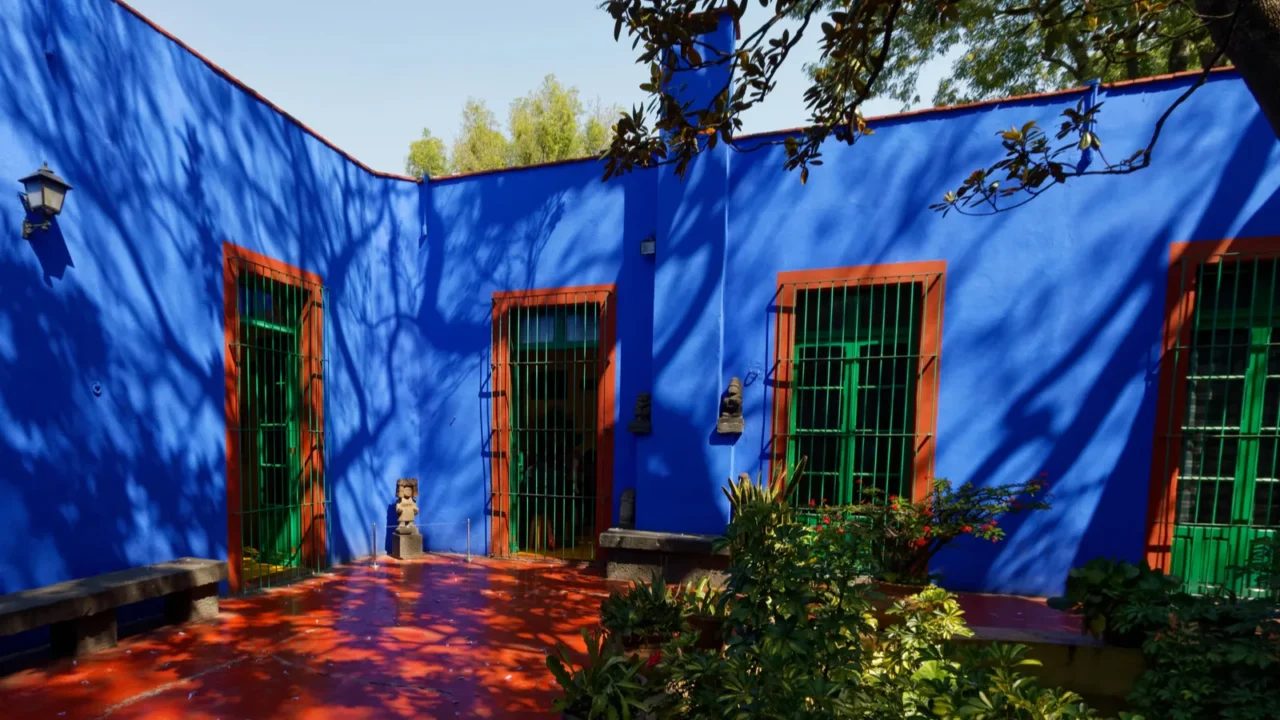
Courtyard Goals, Mexican Style
One of the most iconic features of Casa Azul is its central courtyard. This open-air haven is bursting with cacti, volcanic rock, bright pottery, and tropical plants. It’s a blend of structure and wildness that makes it feel both designed and alive.
Today, designers and travelers look to this kind of layout for backyard ideas, patio makeovers, or even vacation rentals. The blend of native plants, cozy benches, and bold tiles makes a courtyard not just a pretty space, but a cultural experience you can step into
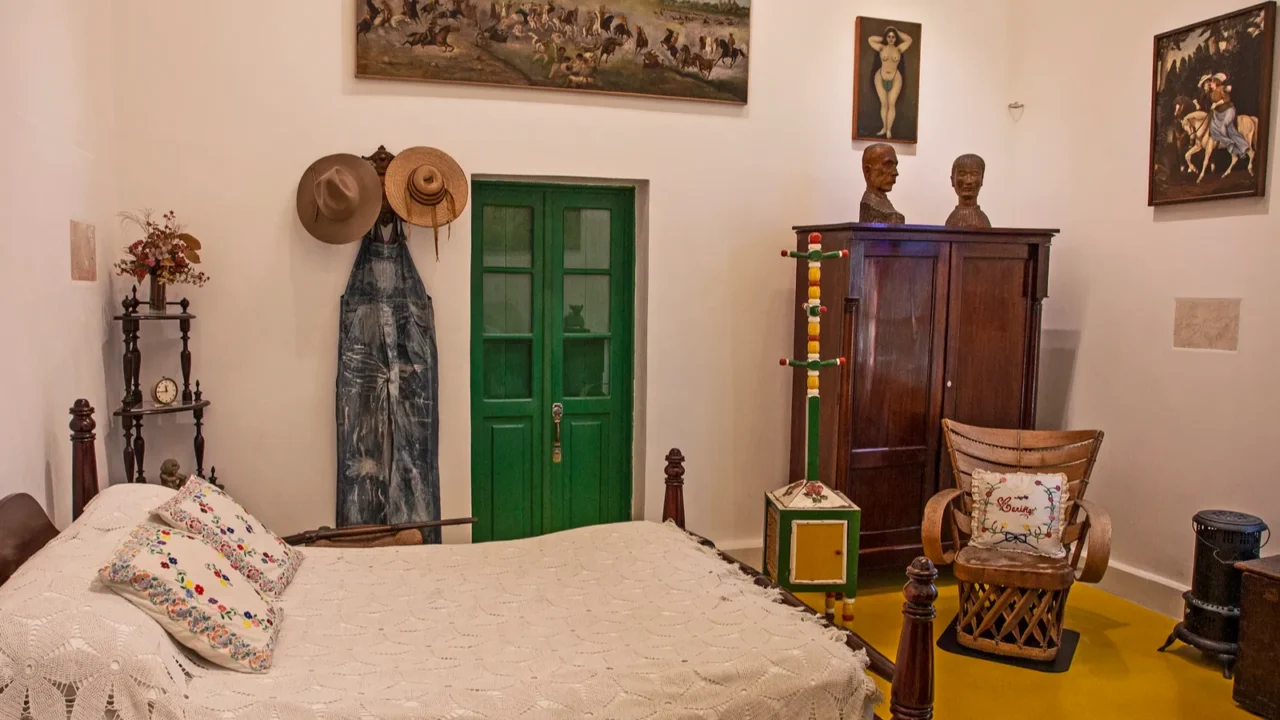
Every Room Has a Purpose
You walk into one room, and it feels like a workspace. Another feels more like a quiet reading spot. The kitchen feels open and warm. But none of the rooms feels like they were arranged just for photos.
There’s stuff everywhere, but it doesn’t feel messy. It feels like someone just stepped out and will be right back. That’s rare in a space people visit every day. Casa Azul still feels like someone’s real home, not a place frozen in time.
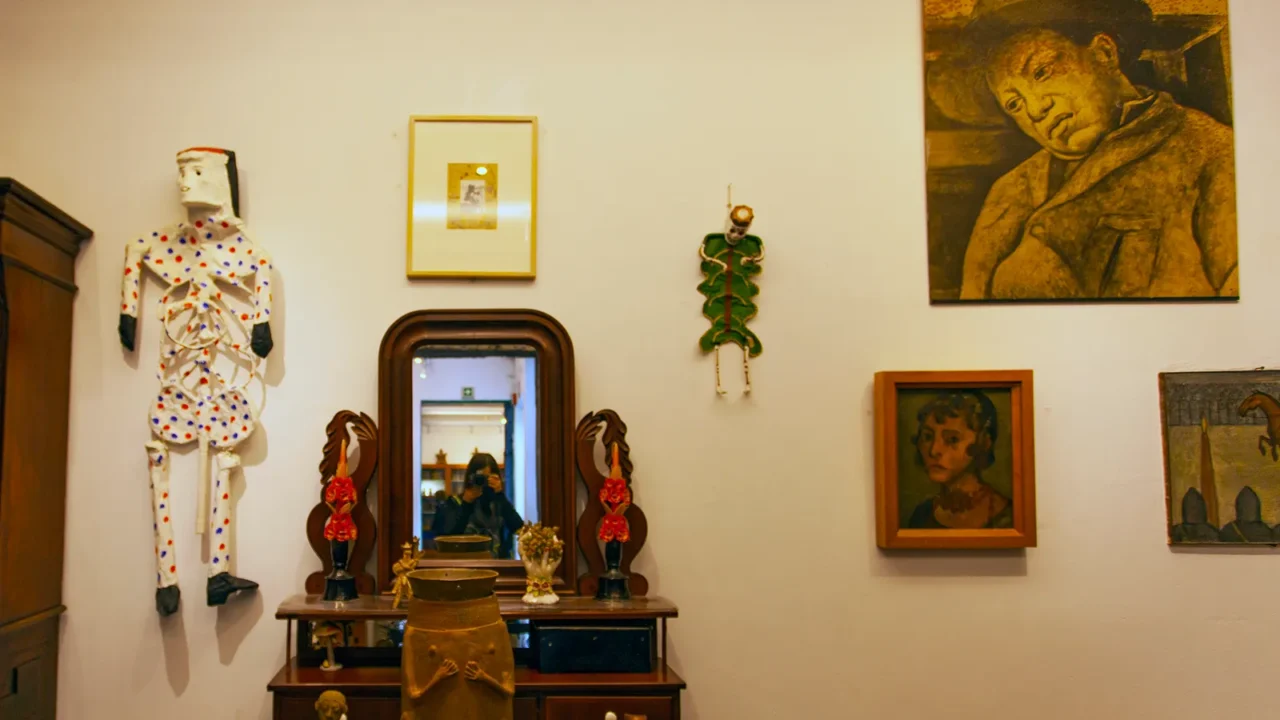
Art Feels Like It Belongs in the Home
You’ll see Frida’s paintings around the house, but they don’t feel out of place. They feel like part of the furniture. The same goes for the folk art, the handmade pieces, and the framed family photos.
You don’t need to know anything about art to enjoy it here. It’s just there, mixed in with everything else. No spotlights or fancy displays. Just personal things sitting where they always have.

The Kitchen Feels Warm and Familiar
The kitchen at Casa Azul is one of the coziest parts of the house. There are bright yellow walls, handmade dishes, and big wooden counters. You can picture people actually cooking here. The shelves are open, with cups and pots out where you can see them.
There are clay pitchers and jars full of everyday things. Nothing feels new, and that’s the best part. It feels like a place where people gathered, not just cooked.
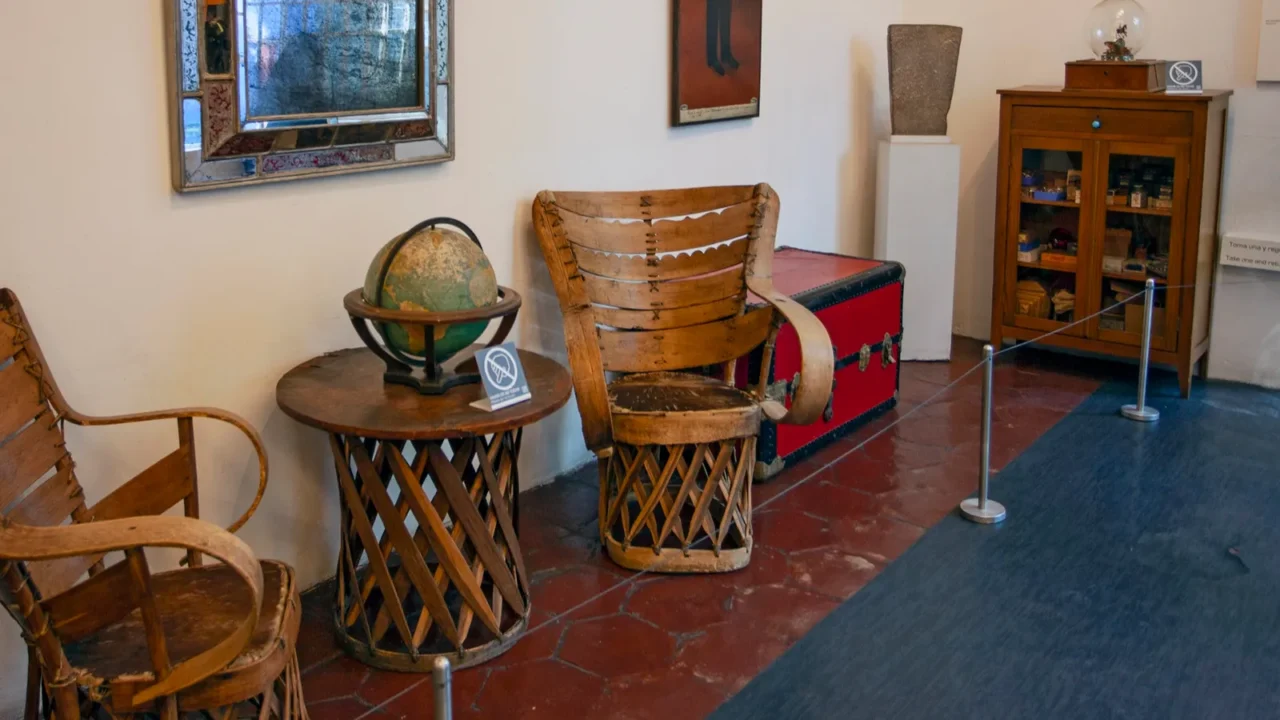
Furniture With Stories
Nothing in Casa Azul looks brand new, and that’s a good thing. The furniture tells a story, from rustic tables to carved wooden chairs. There’s a handmade charm to everything, and that gives the home warmth and weight.
Designers and travelers alike are starting to prioritize pieces that feel lived in, not just styled. Whether you’re thrifting, traveling, or inheriting old family furniture, remember: a scratch or faded patch often means the piece was loved.
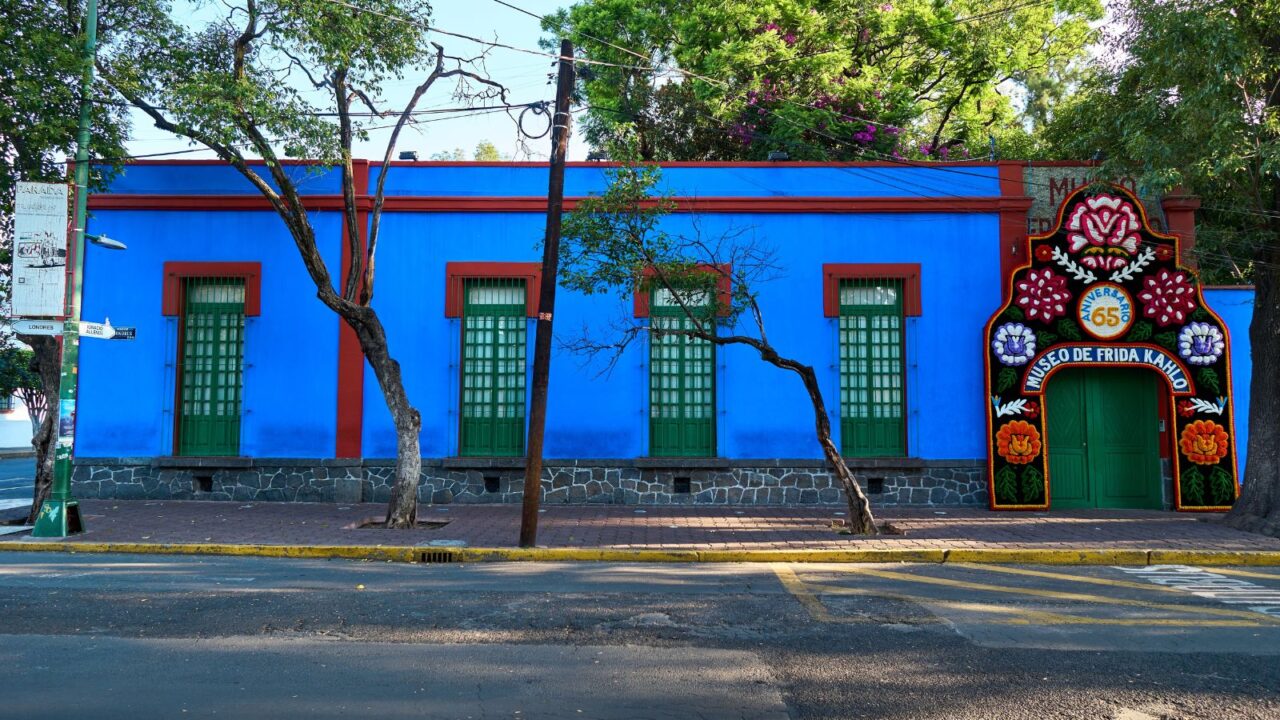
Blue Isn’t Just a Color Here
Casa Azul literally means “Blue House,” and that shade of cobalt is its identity. It symbolizes strength, heritage, and a link to Mexican culture.
You’ll see this same blue echoing across hotels, cafes, and homes around Mexico and beyond. Travel influencers and design lovers are now bringing that tone into their homes, on doors, tiles, and accents.
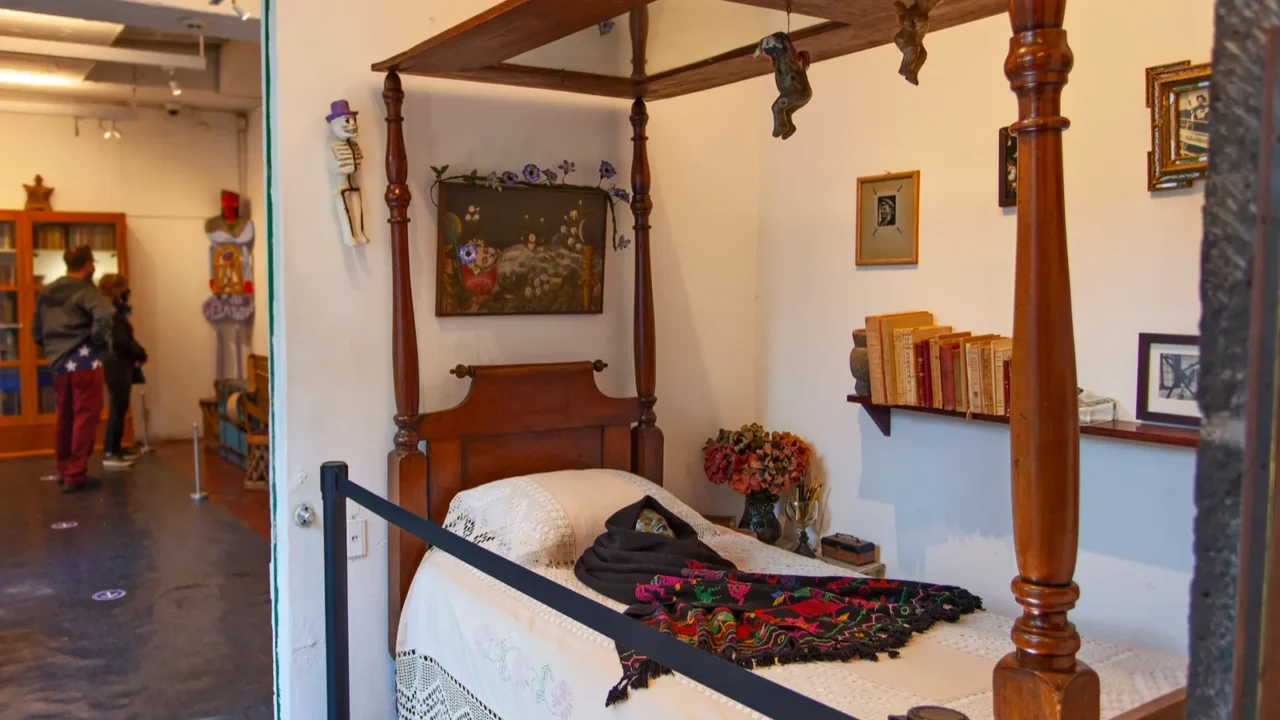
Culture Is Baked Into Every Corne
You can’t separate Frida’s home from her roots. Mexican crafts, symbols, and traditions are everywhere, from the decor to the dishes to the plants in the yard.
It’s not trying to prove anything. It’s just part of the space. That kind of everyday cultural pride is powerful. It shows how design can be deeply personal and still invite others in. You learn a lot here, just by looking around.
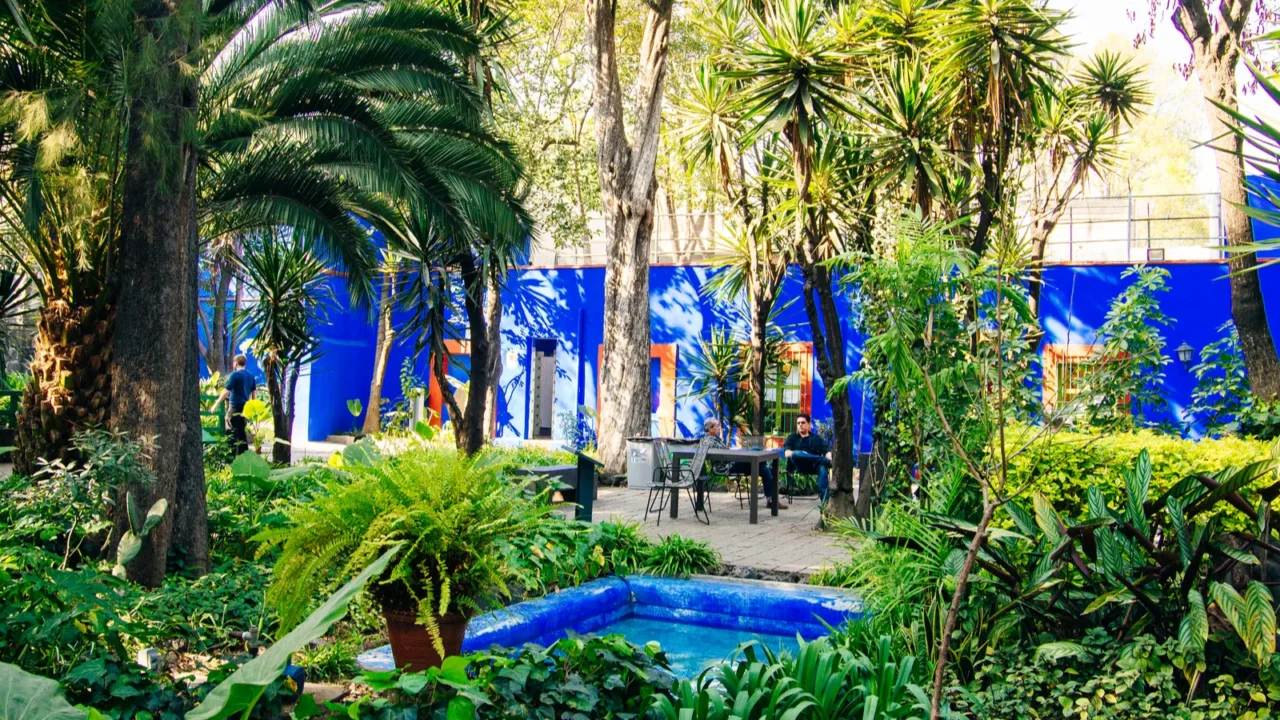
Sights, Sounds, and Scents, A Sensory Tour
Casa Azul is a feast for the senses. Sunlight spills across vibrant tiles and handwoven rugs. Outside, birds chatter in the garden, and the breeze carries the scent of blooming bougainvillea. Step into the kitchen and you might imagine the aroma of simmering spices and fresh tortillas.
Run your hand along a weathered table or the cool, painted walls. Every surface has a story. It’s a place you feel as much as you see.
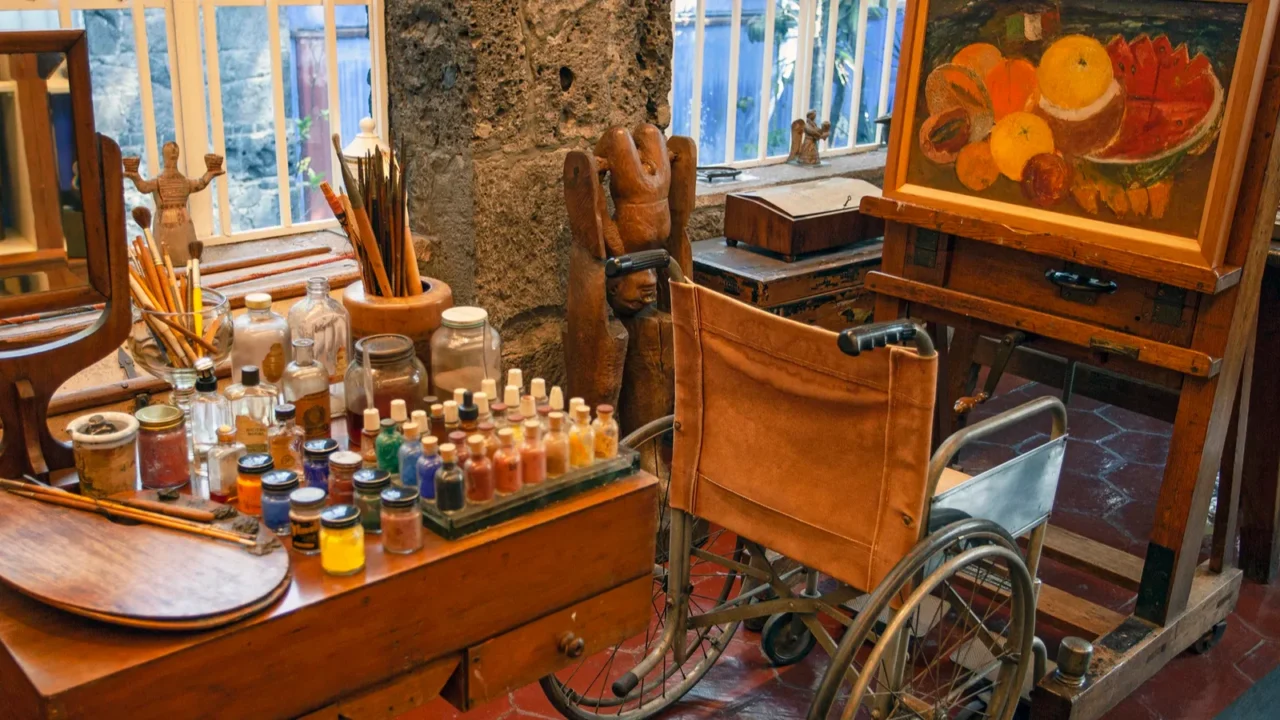
Frida’s Story, Woven Into Every Room
Frida Kahlo lived a deeply emotional and physical life, and it showed in her surroundings.
Frida’s easel stands in the corner, paint still smudged on its surface, as if she’s about to return at any moment. Her medical corsets, painted, patched, and worn, rest nearby, a reminder of how she turned pain into art.
Look closer and you’ll find her wheelchair, tucked beside a sunlit window, and self-portraits that stare right back at you.

From Casa Azul to Cluttercore
Before “cluttercore” was a trend, Casa Azul was living it. Layers of color, mismatched furniture, and meaningful objects fill every space, showing that beauty isn’t about perfection, it’s about personality.
Today, designers and home lovers draw inspiration from Frida’s fearless style. Think bold walls, thrifted treasures, and rooms that tell your story. Casa Azul proves that a home should be as wild and wonderful as the life lived inside it.
Curious how this fearless mix became a full-blown movement? See why cluttercore is making a bold return in 2025, and how to make it feel personal, not messy.
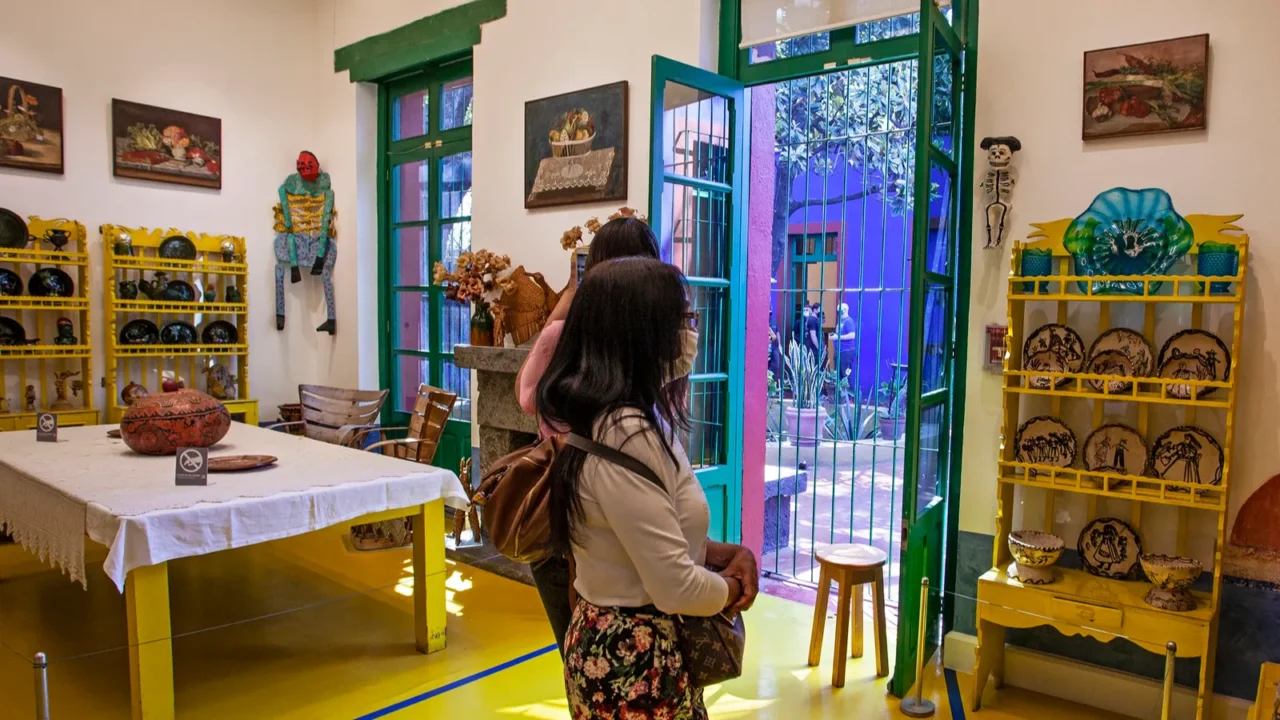
The Visitor Experience, What to Expect
Visiting Casa Azul isn’t like walking through a silent gallery. The place hums with life, even on the busiest days. You’ll join a gentle flow of visitors winding through bright rooms and shady gardens. Some spaces feel intimate, others open and airy.
It’s not all behind glass, sometimes you’ll catch a whiff of fresh flowers or hear the creak of old wood underfoot. Can’t make it in person? The museum offers virtual tours, so you can wander these storied halls from anywhere in the world.
Still craving more storied spaces? Step into Vatican City next, where interiors speak in gold leaf, grand arches, and bold intention.
What do you think of Frida Kahlo’s bold, cluttered style? Tell us, would you embrace this kind of “cluttercore” in your own home, or is it a little too much?
Read More From This Brand:
- Step Inside Havana’s Hidden Glamour Revival
- Istanbul’s Grand Interiors and the Art of Ornate Layering
- Parisian Apartment Style, Inspired by Real Haussmann Homes
Don’t forget to follow us for more exclusive content right here on MSN.
This slideshow was made with AI assistance and human editing.